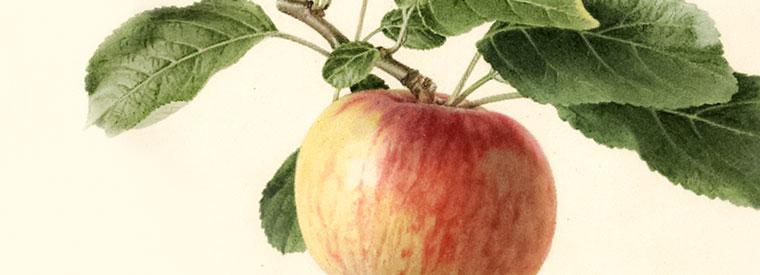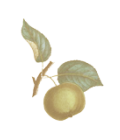From the founding of Jamestown to the time of Washington and Jefferson, every plantation owner made cider, drank cider, and bragged about his cider.

Fruit
GILPIN is likely from Virginia, but of unknown parentage. It is a cider apple also suitable for dessert use. It was listed by A.J. Downing in Fruits and Fruit Trees of America in 1845. He wrote that it was very hardy and vigorous with "fruits of medium size, roundish oblong, skin very smooth and handsome, richly streaked with deep red and yellow. Stalk short, deeply inserted. Calyx is a round, rather deep basin. Flesh yellow, firm, juicy and rich, becoming tender and sprightly in the spring." Coxe, in 1817, wrote that the "apple is said to have been brought from Virginia. It obtained its name from a family in the Delaware State. It is highly esteemed for its excellence as a table apple late in the spring and as a good cider fruit. It is a most abundant bearer and hangs on the tree very late in the season. The tree is hardy of a handsome, open, spreading and vigorous growth…the fruit is small, the color a deep red, sometimes a little streaked with yellow… the skin of a polished smoothness; the form inclining to an oblong. The flesh is very firm, yellow and rich, not fit for eating until mid-winter when it becomes juicy, tender and finely flavored." Small to medium in size, the yellow skin is nearly covered with a red blush and red stripes, and the yellowish flesh is coarse, crisp, tender, and sweet. Because of its late blooming, it is suitable for frost prone areas. It ripens in October.
Ripening Period
- Late Fall - November



